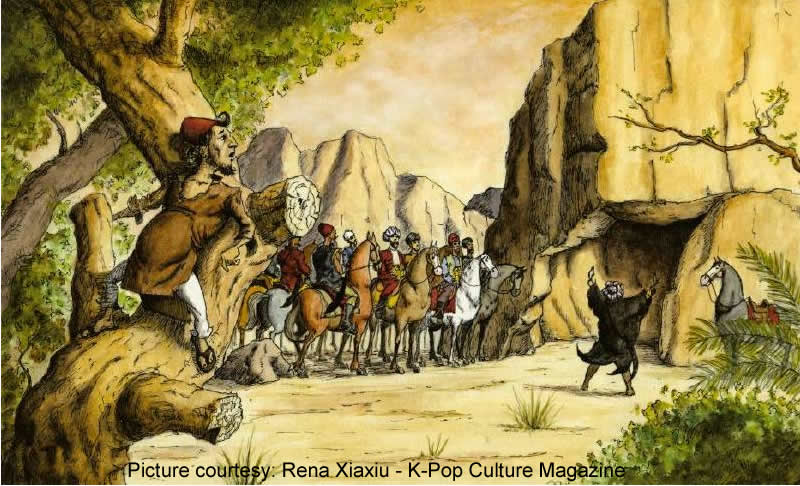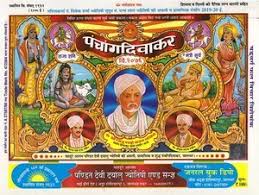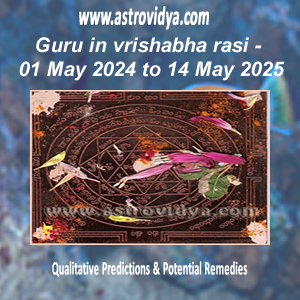

Submission form should automatically load after payment. If the form does not load, after payment please click here

Open Sesame
Write-ups at a glance
Write-ups at a glance
Search by Google:



Disclaimer: All material on the site, www.astrovidya.com are for entertainment purposes only and no guarantee is implied as to the accuracy of contents or advertisements contained in or linked to this website. The contents are based on ancient cannons of astrology and should not be interpreted as legal, financial, political, religious, ethical, medical, psychological, psychiatric or any other specialist advice. The user is wholly responsible for his choices, decisions, judgments and risks. In no event shall the site be liable for any direct, indirect, incidental, punitive or consequential damages of any kind whatsoever with respect to its service, materials and products. By using the services you confirm that you are over 18 and that you understand and agree with these terms of Disclaimer. If you disagree with any part of these terms and conditions, please egress the website.
INACCURACIES IN PANCHANGA

An astrologer makes the charts based on the Panchangas prepared by specialists called Panchanga Karats. The Panchangas are released at the beginning of the Hindu new year, Ugadi. Once I happened to correct a birth chart prepared by a panchanga karta. My client had his own doubts about my calculations and contacted the panchanga karta, who had made the chart. The famous panchanga karta double checked and confirmed his calculations. The wise client fell back on me for clarifications. I had great difficulty in convincing that the calculations were correct but the source document i.e., panchanga itself was wrong! A common man is confused about his moon sign (rasi) and as it differs in various panchangas. Similar is the case of muhurta, amavasya, nakshatra as these starting and ending time varies from panchanga to panchanga.
Preparation of panchanga is a process of finding madhyama, mandoccha positions of the planets to finally arrive at the spasta (exact) position. There are specific constants. Surya Siddanta did not hold good and so Naveena Surya Siddanta took its place. Similarly, the Vakyareeti also needed specific corrections. The astronomers of today also issue correction factors whenever the supposed positions of planets differ with actual positions. Such eventualities were solved by adding constants called 'beeja sanskara' by our ancestors. As the British disregarded the ancient knowledge and the Indians fell in love with British ways, the process of correction perished. As such, the panchangas based on these ancient siddhantas do not hold good.
Preparation of panchanga is a process of finding madhyama, mandoccha positions of the planets to finally arrive at the spasta (exact) position. There are specific constants. Surya Siddanta did not hold good and so Naveena Surya Siddanta took its place. Similarly, the Vakyareeti also needed specific corrections. The astronomers of today also issue correction factors whenever the supposed positions of planets differ with actual positions. Such eventualities were solved by adding constants called 'beeja sanskara' by our ancestors. As the British disregarded the ancient knowledge and the Indians fell in love with British ways, the process of correction perished. As such, the panchangas based on these ancient siddhantas do not hold good.
Another reason for variations in panchangas is due to differences in ayanamsha. (precision value). Many panchangas follow different ayanamshas. The modern astrologers too have contributed to this confusion by floating their own ayanamshas. An astrologer should have to make deep study of the charts wherein the stellar positions and or lagna change when various ayanamshas are employed. I recommend Rashtreeya Panchanga and Lahiri ayanamsha. This ayanamsha is also known as 'sarkari ayanamsha' as this is adopted in the luni-solar calendar of Republic of India, based on the recommendations of panchanga committee. Alternately, one can take the planetary positions from the observatories (astronomical positions) and deduct Lahiri ayanamsha from the same.
Here is a schizophrenic panchanga with different ending times for a tithi, within the same panchanga! This panchanga in Kannada followed Vakyareeti since a long time, the sales came down heavily after some years. The followers of this panchanga realized the predictions based on this panchanga would go wrong, even they were not happy with preparation of natal charts. For some yeas, the panchangakarta was specifying his source as Vakyariti but has discontinued this practice since a couple of years. There is a note (underlined in red) - "this drig ganita (trigonometrical) portion should be used for muhurta and for making birth charts". The other portion does not specify the purpose (which was for determination of festivals and pitru kriyas, as in panchanga of earlier years). You will see amavasya ends at 9.27 pm as per drig ganita panchanga and at 07.35 pm as per the other panchanga! As per their wishful inclinations, all the joises, purohits, acharyas, astrologers in Hassana, Mysuru, Tumakuru, Kolara, Davanagere, Chitradurga and Bengalur districts of Karnataka use either of them. If I have a muhurta at 08.00 pm some hold it is still Amavasya - a common man and even many purohits do not know for sure.
Here is a schizophrenic panchanga with different ending times for a tithi, within the same panchanga! This panchanga in Kannada followed Vakyareeti since a long time, the sales came down heavily after some years. The followers of this panchanga realized the predictions based on this panchanga would go wrong, even they were not happy with preparation of natal charts. For some yeas, the panchangakarta was specifying his source as Vakyariti but has discontinued this practice since a couple of years. There is a note (underlined in red) - "this drig ganita (trigonometrical) portion should be used for muhurta and for making birth charts". The other portion does not specify the purpose (which was for determination of festivals and pitru kriyas, as in panchanga of earlier years). You will see amavasya ends at 9.27 pm as per drig ganita panchanga and at 07.35 pm as per the other panchanga! As per their wishful inclinations, all the joises, purohits, acharyas, astrologers in Hassana, Mysuru, Tumakuru, Kolara, Davanagere, Chitradurga and Bengalur districts of Karnataka use either of them. If I have a muhurta at 08.00 pm some hold it is still Amavasya - a common man and even many purohits do not know for sure.
Generally fixing of muhuta is done by the purohits than astrologers and they fight tooth and nail to claim their supremacy in fixing a foolproof muhurta. When pitted against such people, I will let the old and redundant systems prevail for a day! Any healthy argument is possible in an open minded atmosphere. A common man is distraught and as a result astrology has lost credibility. When we have landed on moon, when we know exact positions of sun and moon, how is it that Amavasya ends at two different times, with considerable variance? Are our Gods and Forefathers are pleased with outdated vakya or surya panchangas like the conventionalists?
Thanks to some panchanga kartas of Andhra Pradesh, they have made their job easy by adopting the Rastreeya Panchanga (National Calendar). The government supplies soft copies of the national calendar based on trigonometrical positions with Lahiri ayanamsha. These panchanga kartas use the same and put some additional pages based on their convention. It is easy to make such panchanga and there will be no more any confusions in positions of planets and the beginning/ ending of stars, rasis and tithis, if all the panchanga kartas adopt the same method.
Rahu kala is another horrifying factor in south India. In all the wall calendars beginning and ending of rahu kala remains the same, throughout the year for all places in the world! Rahu kala is not followed in North India and the people of Guntur are sure, Rahu kala is not applicable on Tirumala Hills! This rahu kala depends on the sun rise and has nothing to do with the node (or shall we say, planet?) Rahu. Sun rise differs from place to place and is not the same throughout the year. The rahu kala shown in the calendars (and also noted in the pocket dairy of your purohit) is calculated at 6.00 am sun rise. How is it possible that rahu kala is the same on Monday for all places - Chennai, Bangalore, Delhi and Mumbai - throughout the year? Similar is the case with yama ganda and gulika kala. Rahu kala, gulika, yama ganda, varjya, durmuhurta, amrita ghadiyalu etc., etc., are NOT used in making natal charts and also in predictive astrology. All these depend on local sunrise, the result is, panchanga made in Hyderabad can not be used in Guntur without corrections to sunrise time. Too much importance is given to these elements in recent times. One Andhra panchanga borrowed the idea of Panchaka from kannada panchangas and this was used for five years or so. Then they realized that the procedure for calculations is not concurrent in all the kannada panchangas and so Telugu people have been spared now.
Thanks to some panchanga kartas of Andhra Pradesh, they have made their job easy by adopting the Rastreeya Panchanga (National Calendar). The government supplies soft copies of the national calendar based on trigonometrical positions with Lahiri ayanamsha. These panchanga kartas use the same and put some additional pages based on their convention. It is easy to make such panchanga and there will be no more any confusions in positions of planets and the beginning/ ending of stars, rasis and tithis, if all the panchanga kartas adopt the same method.
Rahu kala is another horrifying factor in south India. In all the wall calendars beginning and ending of rahu kala remains the same, throughout the year for all places in the world! Rahu kala is not followed in North India and the people of Guntur are sure, Rahu kala is not applicable on Tirumala Hills! This rahu kala depends on the sun rise and has nothing to do with the node (or shall we say, planet?) Rahu. Sun rise differs from place to place and is not the same throughout the year. The rahu kala shown in the calendars (and also noted in the pocket dairy of your purohit) is calculated at 6.00 am sun rise. How is it possible that rahu kala is the same on Monday for all places - Chennai, Bangalore, Delhi and Mumbai - throughout the year? Similar is the case with yama ganda and gulika kala. Rahu kala, gulika, yama ganda, varjya, durmuhurta, amrita ghadiyalu etc., etc., are NOT used in making natal charts and also in predictive astrology. All these depend on local sunrise, the result is, panchanga made in Hyderabad can not be used in Guntur without corrections to sunrise time. Too much importance is given to these elements in recent times. One Andhra panchanga borrowed the idea of Panchaka from kannada panchangas and this was used for five years or so. Then they realized that the procedure for calculations is not concurrent in all the kannada panchangas and so Telugu people have been spared now.















